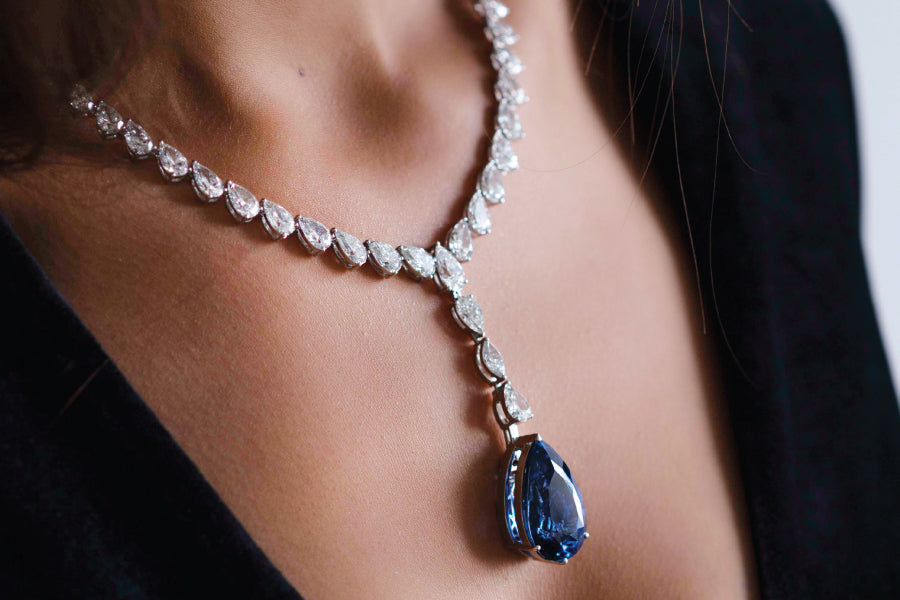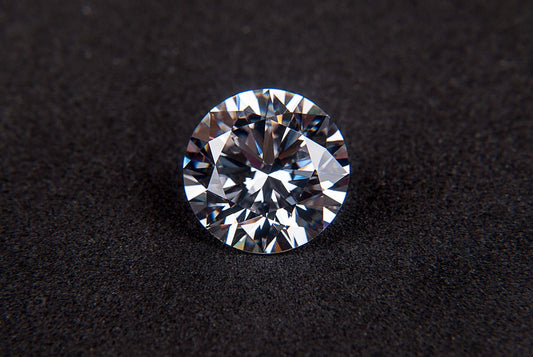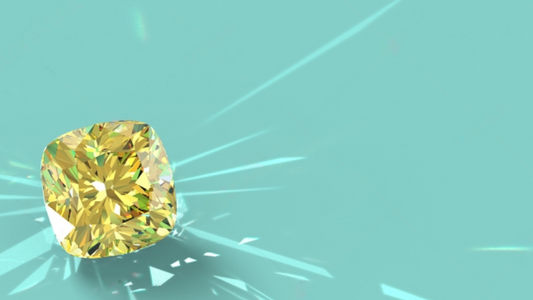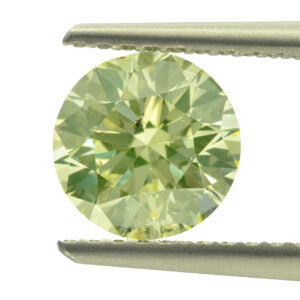Corundum is the scientific name for sapphire crystals, and it has a hexagonal crystal structure. Corundum or sapphire is an aluminium oxide mineral. Corundum comes in different types of colours which are blue sapphires or blue corundum, pink sapphires or pink corundum, and many others.
Diffused sapphires are pretty fascinating because they are made by infusing different types of gems with other materials like metals or glass. This creates a beautiful colour gradient, and the resulting gem is often more valuable than the original ones used in creating it.
Some heat treatment processes are relatively gentle, involving temperatures of around 400°C for short periods. These are typically employed on pink sapphires from Madagascar's mines, and they can also be used on Madagascar's sought-after rubies.
As time passes, heat treatment to natural sapphires has changed to a higher temperature ranging up to 1700 degree celsius, changing its natural colour— dull, lifeless stones into vibrant, rich ones. Gemologists with experience will be able to tell if a sapphire has been subjected to this kind of high heating.
Natural sapphires or Star sapphires can be created or improved by heating corundum to temperatures between 1200 and 1600 degrees Celsius. However, since the demand for natural transparent rough has risen in recent decades, asterism treatments have become less common. Transparent rough will continue to be more desirable in their natural colour.
Sapphire Treatments
There are two levels of heat-treating sapphires, and these are classified as slight heat and extreme heat. Differentiating between these levels of treatment can have a significant impact on a sapphire's pricing. The inherent hue of sapphire is developed or intensified by heat treatment. These heat treatments can improve the colour and clarity of the gem. It is done by reducing or removing the inclusions to make them merely visible.
You can determine sapphire with standard heat treatment when the inclusions with tension halos in discoid fractures are seen. It appears to be disk-shaped fractures with lace-like healing rims. The growth of natural crystal inclusions causes this. Also, mineral inclusions have been burned or changed with spherical, generally whitish looks that resemble snowballs or cotton-like. Negative crystals with shattered two different inclusions are also a sign of standard heat treatment. And Surface regions fused, particularly around the girdle.

DIFFUSED SAPPHIRE
Lattice Diffusion treatment
Lattice diffusion is the next process step after heat treatment. It involves heating a sapphire to 10,000 degrees in a vacuum chamber, which creates a bond between sapphire and a lattice gas such as argon or nitrogen and then adds an element into it to create vivid colours into the gem.
Diffusion using Beryllium and Titanium
The diffusion treatment technique using beryllium can penetrate more profoundly into the sapphire because it has a smaller atomic structure. It is used to lessen or eliminate the blue tint in overly dark sapphires. There may be some remnants of a yellow hue inside the stone after the treatment. With additional heat treatment, the "yellow colour" can be erased.
As a result, the sapphire will "retain" its blue colour, making it more marketable. Immersion and magnification will reveal a colourless zone around the outside of an otherwise, blue stones could be shown. Lattice diffusion will be determined.
Beryllium is a metal that can change the colour of sapphires, often to a more orange or gold hue.
In the instance of titanium diffusion, a vibrant colour layer is formed at the surface of a sparsely coloured. Because the colour layer is only on the surface, if the stone is cracked or re-polished, the original natural colour of the stone can be uncovered.
Titanium colours natural coloured pale sapphires into blue.These sapphires are far less expensive, ranging from $1 to $20 per carat. This is due to man's introduction of new elements, making these less rare and not better-looking sapphires more marketable.
Lead-glass Diffused Sapphires
Lead-glass-infused sapphires are a new sapphire that I only learned about a few months ago. Creating these sapphires is quite long and expensive, with the lead having to be melted down, ground, and then mixed with the sapphire. With so much lead in the process and so many steps required to create this particular type of gem. Lead-glass treatment is only standard for rubies, and now, it is also used for sapphires. The reason might be because rubies and corundum are more alike than thought to cousins as gems.
Radiation Treatment
Controlled radiation is occasionally used to turn pale yellow, weak brown, and greyish sapphires into a beautiful, rich golden yellow to orange. While these stones are generally safe to wear, their colour may not always be consistent and will fade quickly when exposed to harsh light or when heated.
A fade test is performed by gem dealers on questionable stones by exposing them to bright light over some time and evaluating any colour change. By this means, they will know if the gem is a natural sapphire.

sapphire
What are the Benefits of Knowing About Sapphire Treatments?
Before acquiring a gemstone, every gemstone consumer should understand how to distinguish natural, not treated sapphires and heated or current treatment sapphires.
The cost varies depending on which level of treatment is used. Natural sapphires that have not been heated are extremely expensive, costing around $5,000 per carat to $1 per carat for the innovative treatment lattice-diffused sapphires, which have now swamped the market. This is especially true in Thailand, where numerous eBay dealers operate.
Understanding what you should watch for and verifying the certificate's legitimacy is very important. It can mean the difference between getting a good bargain on sapphire and getting a bad deal on sapphire. And you were duped into buying one since the seller failed to disclose the sort of treatment the stone had been subjected to.
Why Should You Know About Sapphire Treatments?
It is essential to know about sapphire treatments, so you will know If what you are buying is suitable for the price given or not. Understanding sapphire treatments will let you distinguish if the gem is natural or not. this will evade you from scams.
How to Test for Diffusion Treated Gems?
The most effective way of detecting a diffusion-treated stone is by Immersion.









